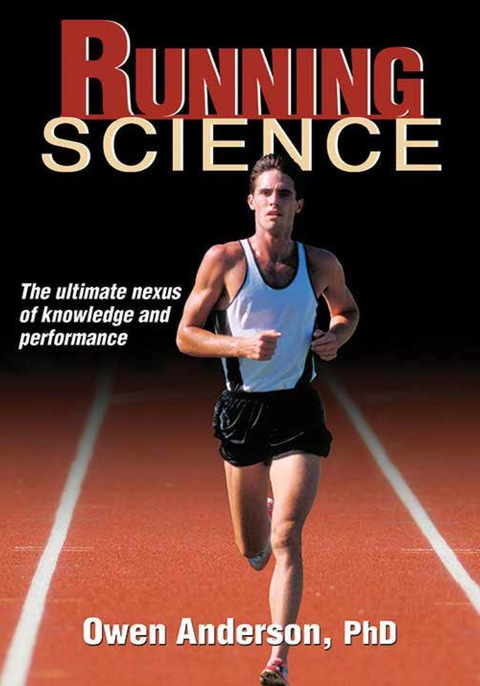Description
Efnisyfirlit
- Title Page
- Copyright Page
- Dedication
- Contents
- Acknowledgments
- Prologue
- Part I: Genetics and Running
- Chapter 1: Running’s Nature-Versus-Nurture Debate
- Chapter 2: Genes That Influence Performance
- Chapter 3: Genetic Differences Between Elite and Nonelite Runners
- Part II: Biomechanics of Running
- Chapter 4: The Body While Running
- Chapter 5: Refinement in Running Form
- Chapter 6: Running Surfaces, Shoes, and Orthotics
- Part III: Physiological Factors in Running Performance
- Chapter 7 Maximal Aerobic Capactiy (VO2max)
- Chapter 8: Running Economy
- Chapter 9: Minimum Velocity for Maximal Aerobic Capacity (vVO2max)
- Chapter 10: Velocity at Lactate Threshold
- Chapter 11: Maximal Running Speed
- Chapter 12: Resistance to Fatigue
- Part IV: Training Modes and Methods for Runners
- Chapter 13: General Strength Training
- Chapter 14: Running-Specific Strength Training
- Chapter 15: Hill Training
- Chapter 16: Speed Training
- Chapter 17: Cross-Training
- Chapter 18: Altitude Training
- Part V: Training Variables and Systems in Running
- Chapter 19: Frequency and Volume
- Chapter 20: Intensity
- Chapter 21: Recovery
- Chapter 22: Periodization and Block Systems
- Chapter 23: Integrated Strength and Endurance Training Programs
- Part VI: Optimal Training for Specific Conditioning
- Chapter 24: Increasing VO2max
- Chapter 25: Enhancing Economy
- Chapter 26: Gaining vVO2 max
- Chapter 27: Upgrading Lactate Threshold
- Chapter 28: Increasing Maximal Running Speed
- Chapter 29: Promoting Resistance to Fatigue
- Chapter 30: Training Effects at the Molecular Level
- Chapter 31: Training Favoring Molecular Enrichment
- Part Viii: Distance-Specific Training
- Chapter 32: Training for 800 Meters
- Chapter 33: Training for 1.500 Meters and the Mile
- Chapter 34: Training for 5Ks
- Chapter 35: Training for 10Ks
- Chapter 36: Training for Half Marathons
- Chapter 37: Training for Marathons
- Chapter 38: Training for Ultramarthons
- Part IX: Sports Medicine for Runners
- Chapter 39: Running Injuries and Health Risks
- Chapter 40: Prevention of Running Injuries
- Chapter 41: Health Benefits of Running
- Chapter 42: Health Considerations for Special Running Populations
- Part X: Running Nutrition
- Chapter 43: Energy Sources for Fuel Use for Runners
- Chapter 44: Eating for Enhanced Endurance and Speed
- Chapter 45: Fueling Strategies During a Run
- Chapter 46: Weight Control and Body Composition
- Chapter 47: Ergogenic Aids for Running
- Part XI: Psychology of Running
- Chapter 48: The Brain and the Experience of Fatigue
- Chapter 49: Psychological Strategies for Imrpoved Performance
- Chapter 50: Addictive Aspects of Running
- Epilogue: The Future of Running
- References
- Index
- About the Author






Reviews
There are no reviews yet.